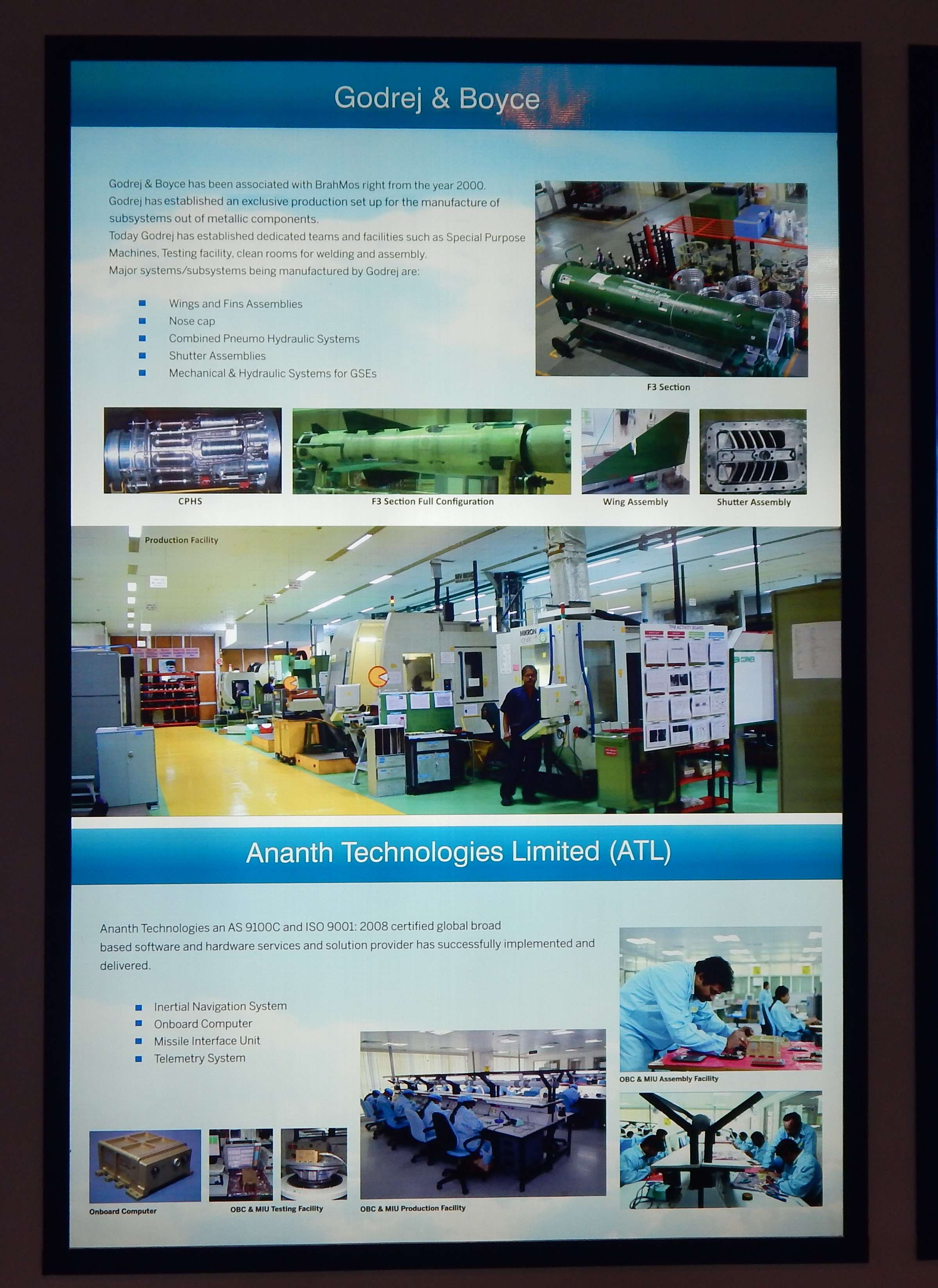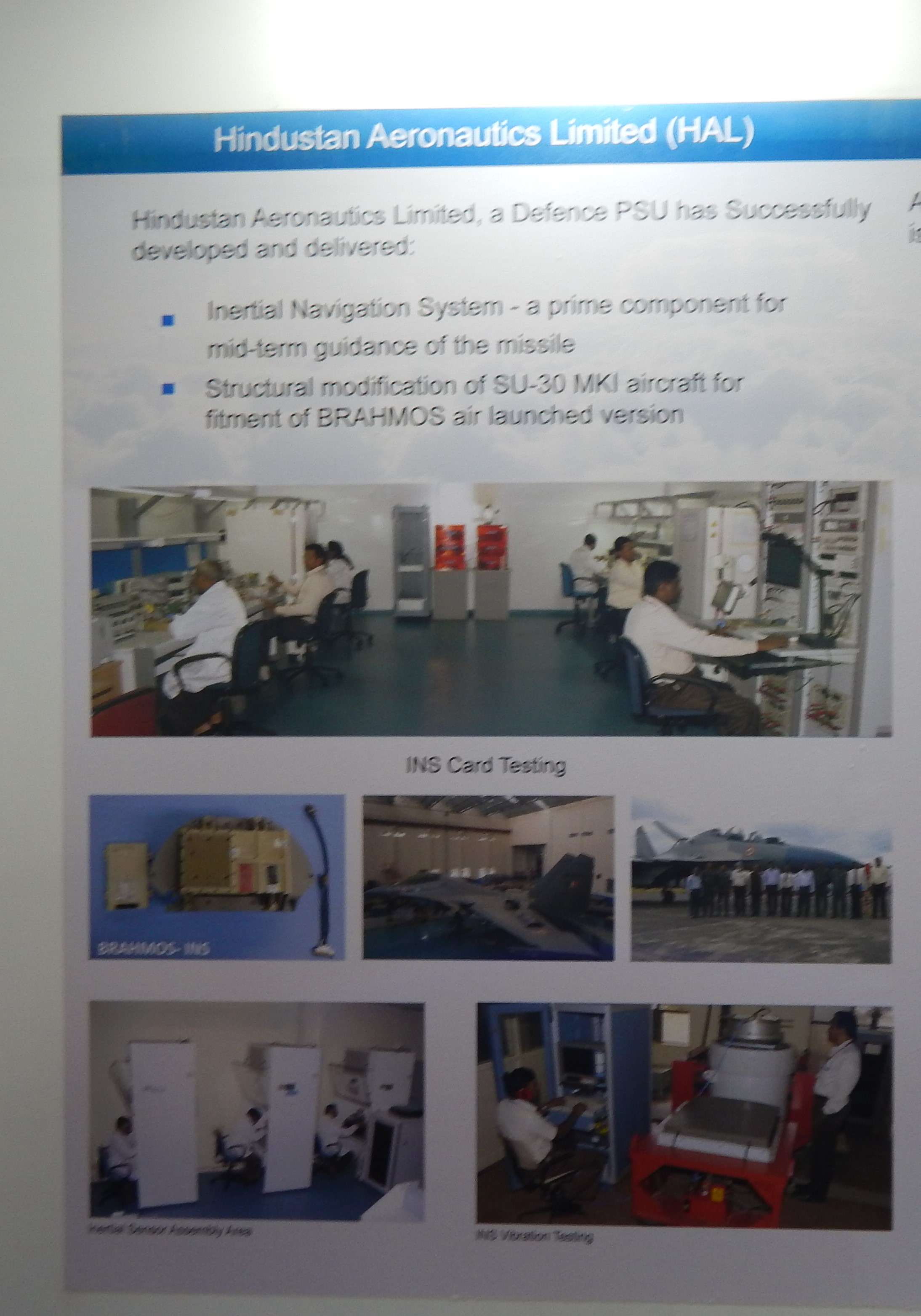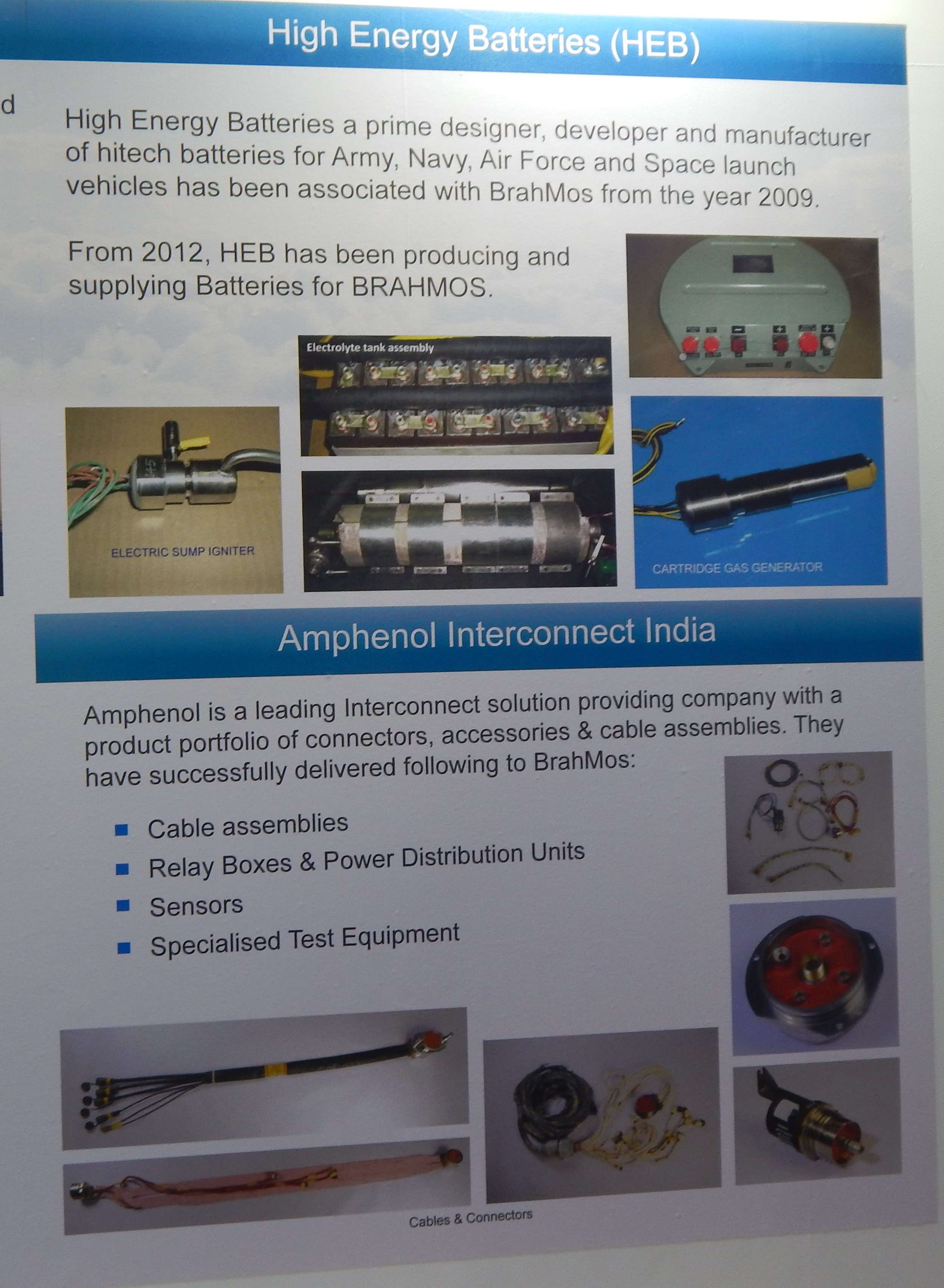Stephen Cohen
BANNED

- Joined
- Nov 21, 2014
- Messages
- 8,456
- Reaction score
- -37
- Country
- Location
A view from the BrahMos missile factory
http://indiatoday.intoday.in/story/bramos-missile-russia-military/1/886323.html
The fastest conventional missile, BrahMos, is powered throughout its course and can follow an unpredictable trajectory to reach its target, making it difficult to defend against.

What has been the impact of India gaining a seat, last year, at the Missile Technology Control Regime (MTCR) - a global club it courted for years before being finally let in?
The man who answered was none other than the boss of Defence Research and Development Organisation (DRDO), Dr S Christopher. He chose the Indo-Russian supersonic cruise missile BrahMos to make his point.
"The immediate impact," he said, "would be seen on the BrahMos whose range will be increased from 290km to 450km". The date chosen for the test is March 10 he said.
BrahMos: INDIA'S FASTEST CONVENTIONAL MISSILE
Arguably the world's fastest conventional missile which in flight covers a kilometer every second, the BrahMos, observers say hardly gives its target a chance. Its makers claim it hits with an accuracy of '99.99 per cent'. Unlike a ballistic missile (for example from the AGNI & PRITHVI family), a cruise missile is powered throughout its course and can follow an unpredictable trajectory to reach its target. That is what makes a cruise missile difficult to defend against. While its deployment has rattled adversaries, its evolution has been remarkably swift. Not surprisingly, the missile finds a place on the frontline warships of the Indian Navy (IN). Multiple regiments are held by the Indian Army. The air-launched version, where in a first-of-its-kind move, the 8.4m long missile would be fired by the Su-30MKI heavy bomber of the Indian Air Force (IAF), is in its final stage before test firing.
The company manufacturing the missile, BrahMos Aerospace Private Limited, says its order books are full for production till 2025 and for maintenance support till 2035.
Going ahead, efforts will be made to extend the missile's reach to 800km as well as to bring out hypersonic, submarine launched and miniaturized versions.
Nearly 570km northwards from where Dr Christopher was speaking, in Hyderabad, a group of individuals seemed upset. The reason was a signed Parliamentary response by Defence Minister Manohar Parrikar where, in March 2016 he declared that the BrahMos missile had 65 per cent imported content.
"There has been a gap in communication somewhere. The imported content is down to about 40 per cent," said one among them. At the 40-acre, state of the art BrahMos Integration Complex (BIC) of the BrahMos Aerospace, where a 300-strong workforce carries itself with infectious pride, it isn't too difficult to see why Parrikar's remark has gone down adversely. Inside its biggest facility, the average age of the workforce is between 29-32 years. Operating out of neatly maintained, access-controlled integration units, youngsters conduct spot meetings, exchange notes right besides the 8.4m long missile. It would be incorrect however to state that only the young are involved in the programme. There are several seniors too who supervise them. The BIC takes what Parrikar referred to - indigenization - as its key challenge.
RUSSIA IS THE MAJOR SUPPLIER
As on date, Russia supplies a majority of the equipment for the two stage missile. It includes the booster that takes the missile to speeds after which the engine kicks in, the ramjet engine that takes over from the booster, the seeker that detects the target and activates the 300kg warhead and the canister in which the missile is stowed among other items.
"In another year, we can go to 70 per cent in terms of indigenisation but not beyond.
We do not have an alternative to ramjet or seeker", said Chief Executive Officer and Managing Director Dr Sudhir Kumar Mishra who doubles up as the Chief Controller (Research & Development), DRDO. Rigidity at the BIC is a way of life. The Hyderabad-based complex offers twelve different stages of assembly for every single missile which at every stage involves quality control. While there are teams looking at the issue within, there is also third party certification for the missile.
"Random checks are conducted and for any item found unfit, the entire batch is discarded," a staffer pointed out. "We'd rather have the missile parts fail here than in the air, right," remarked Akula Harish, a Senior Systems Engineer. By its nature, the missile performs the unthinkable once fired. To do so it undergoes stress. To ready it for that stress, every electronic component undergoes a bump test which requires it to face severe jerks over 1 lakh times. Thermal shocks are also given to weed out weak points. "We subject the parts to temperatures from 200 degrees to minus 50," said a staffer.
All of this has had a role in ensuring that in the 54 flights of the missile, there has never been a major accident. Team BrahMos often face some questions. For example, if the missile is so good then why isn't Russia inducting it? What happens if tomorrow India and Russia part ways? The best way to answer critics is to always remain relevant, the team believes. As a result, all eyes are firmly fixed on a test slated for the coming month. "When the world's heaviest missile will be fired from the world's biggest launcher on the Su-30MKI, our air force will become the only one in the world with such a capability. The competition, already about 20 years behind us, will be pushed back further," Mishra said.
An excited air force has already earmarked 40 Su-30MKIs which will carry the BrahMos. 32-year-old Abhishek Panigrahi is a Deputy General Manager involved with the development of the air-launched missile. "People visit the Ganges and purify themselves with a holy dip. For me, seeing our product fire has the same effect," he said. Jyoti Singh, a Systems Engineer has an elder brother serving in the Army. "Readying the BrahMos and helping them do their work better makes me feel proud," she said. Vikram (29), a Systems Manager touched upon a side less understood. While India holds 50.5 per cent stakes, Russia holds 49.5 per cent and as a result, the firm is neither a public entity firm nor an entirely private one.
"We have targets to meet. Our deadlines are inviolate so the atmosphere is hardly what many think it to be," he said. As the Executive Director in-charge of production, Vice Admiral NN Kumar (Retired) revealed why BrahMos has managed to carve out a niche. "We pay better than the industry does. And we have much more room to select our industry partners since not all government rules apply to us. Yes that does not mean we are beyond scrutiny though". BrahMos Aerospace has nearly 200 industry partners, including those from the private sector on the Indian side and over a hundred on the Russian side. When Bhatu Ahire got to Hyderabad from Dhule in Maharashhtra, he thought BrahMos was just another 'sarkaari' job he found in the newspapers and luckily made it into. He did not even know it was a missile. Recently, he got a taste of what his work and his organisation meant to the world outside. He recalled, "I used to dig wells in my village before coming here. During last year's Republic Day, they felicitated my mother for the work my company and I do. I have no words to express my feeling".
BRAHMOS- THE ORIGIN
The missile was born out of an Inter Governmental Agreement inked on February 12, 1998 in Moscow. More than the agreement, however, BrahMos was a direct result of two factors. Effective usage of cruise missiles by US against Iraq during Operation Desert Storm in 1991 and the collapse of the 75-year-old Soviet Union later that year where the inheritor, Russia, was under duress. Sensing an opportunity, India moved in to engage and in 1998 signed the dotted line with Russia to create BrahMos. "We had by then covered a fair bit of distance in our own ballistic missile program. However, seeing the impact of cruise missiles in that war, we wanted them," said Lt General VK Chaturvedi (Retired), who inducted the first regiment of the BrahMos and was associated with Army's modernisation plans.
http://indiatoday.intoday.in/story/bramos-missile-russia-military/1/886323.html
The fastest conventional missile, BrahMos, is powered throughout its course and can follow an unpredictable trajectory to reach its target, making it difficult to defend against.

What has been the impact of India gaining a seat, last year, at the Missile Technology Control Regime (MTCR) - a global club it courted for years before being finally let in?
The man who answered was none other than the boss of Defence Research and Development Organisation (DRDO), Dr S Christopher. He chose the Indo-Russian supersonic cruise missile BrahMos to make his point.
"The immediate impact," he said, "would be seen on the BrahMos whose range will be increased from 290km to 450km". The date chosen for the test is March 10 he said.
BrahMos: INDIA'S FASTEST CONVENTIONAL MISSILE
Arguably the world's fastest conventional missile which in flight covers a kilometer every second, the BrahMos, observers say hardly gives its target a chance. Its makers claim it hits with an accuracy of '99.99 per cent'. Unlike a ballistic missile (for example from the AGNI & PRITHVI family), a cruise missile is powered throughout its course and can follow an unpredictable trajectory to reach its target. That is what makes a cruise missile difficult to defend against. While its deployment has rattled adversaries, its evolution has been remarkably swift. Not surprisingly, the missile finds a place on the frontline warships of the Indian Navy (IN). Multiple regiments are held by the Indian Army. The air-launched version, where in a first-of-its-kind move, the 8.4m long missile would be fired by the Su-30MKI heavy bomber of the Indian Air Force (IAF), is in its final stage before test firing.
The company manufacturing the missile, BrahMos Aerospace Private Limited, says its order books are full for production till 2025 and for maintenance support till 2035.
Going ahead, efforts will be made to extend the missile's reach to 800km as well as to bring out hypersonic, submarine launched and miniaturized versions.
Nearly 570km northwards from where Dr Christopher was speaking, in Hyderabad, a group of individuals seemed upset. The reason was a signed Parliamentary response by Defence Minister Manohar Parrikar where, in March 2016 he declared that the BrahMos missile had 65 per cent imported content.
"There has been a gap in communication somewhere. The imported content is down to about 40 per cent," said one among them. At the 40-acre, state of the art BrahMos Integration Complex (BIC) of the BrahMos Aerospace, where a 300-strong workforce carries itself with infectious pride, it isn't too difficult to see why Parrikar's remark has gone down adversely. Inside its biggest facility, the average age of the workforce is between 29-32 years. Operating out of neatly maintained, access-controlled integration units, youngsters conduct spot meetings, exchange notes right besides the 8.4m long missile. It would be incorrect however to state that only the young are involved in the programme. There are several seniors too who supervise them. The BIC takes what Parrikar referred to - indigenization - as its key challenge.
RUSSIA IS THE MAJOR SUPPLIER
As on date, Russia supplies a majority of the equipment for the two stage missile. It includes the booster that takes the missile to speeds after which the engine kicks in, the ramjet engine that takes over from the booster, the seeker that detects the target and activates the 300kg warhead and the canister in which the missile is stowed among other items.
"In another year, we can go to 70 per cent in terms of indigenisation but not beyond.
We do not have an alternative to ramjet or seeker", said Chief Executive Officer and Managing Director Dr Sudhir Kumar Mishra who doubles up as the Chief Controller (Research & Development), DRDO. Rigidity at the BIC is a way of life. The Hyderabad-based complex offers twelve different stages of assembly for every single missile which at every stage involves quality control. While there are teams looking at the issue within, there is also third party certification for the missile.
"Random checks are conducted and for any item found unfit, the entire batch is discarded," a staffer pointed out. "We'd rather have the missile parts fail here than in the air, right," remarked Akula Harish, a Senior Systems Engineer. By its nature, the missile performs the unthinkable once fired. To do so it undergoes stress. To ready it for that stress, every electronic component undergoes a bump test which requires it to face severe jerks over 1 lakh times. Thermal shocks are also given to weed out weak points. "We subject the parts to temperatures from 200 degrees to minus 50," said a staffer.
All of this has had a role in ensuring that in the 54 flights of the missile, there has never been a major accident. Team BrahMos often face some questions. For example, if the missile is so good then why isn't Russia inducting it? What happens if tomorrow India and Russia part ways? The best way to answer critics is to always remain relevant, the team believes. As a result, all eyes are firmly fixed on a test slated for the coming month. "When the world's heaviest missile will be fired from the world's biggest launcher on the Su-30MKI, our air force will become the only one in the world with such a capability. The competition, already about 20 years behind us, will be pushed back further," Mishra said.
An excited air force has already earmarked 40 Su-30MKIs which will carry the BrahMos. 32-year-old Abhishek Panigrahi is a Deputy General Manager involved with the development of the air-launched missile. "People visit the Ganges and purify themselves with a holy dip. For me, seeing our product fire has the same effect," he said. Jyoti Singh, a Systems Engineer has an elder brother serving in the Army. "Readying the BrahMos and helping them do their work better makes me feel proud," she said. Vikram (29), a Systems Manager touched upon a side less understood. While India holds 50.5 per cent stakes, Russia holds 49.5 per cent and as a result, the firm is neither a public entity firm nor an entirely private one.
"We have targets to meet. Our deadlines are inviolate so the atmosphere is hardly what many think it to be," he said. As the Executive Director in-charge of production, Vice Admiral NN Kumar (Retired) revealed why BrahMos has managed to carve out a niche. "We pay better than the industry does. And we have much more room to select our industry partners since not all government rules apply to us. Yes that does not mean we are beyond scrutiny though". BrahMos Aerospace has nearly 200 industry partners, including those from the private sector on the Indian side and over a hundred on the Russian side. When Bhatu Ahire got to Hyderabad from Dhule in Maharashhtra, he thought BrahMos was just another 'sarkaari' job he found in the newspapers and luckily made it into. He did not even know it was a missile. Recently, he got a taste of what his work and his organisation meant to the world outside. He recalled, "I used to dig wells in my village before coming here. During last year's Republic Day, they felicitated my mother for the work my company and I do. I have no words to express my feeling".
BRAHMOS- THE ORIGIN
The missile was born out of an Inter Governmental Agreement inked on February 12, 1998 in Moscow. More than the agreement, however, BrahMos was a direct result of two factors. Effective usage of cruise missiles by US against Iraq during Operation Desert Storm in 1991 and the collapse of the 75-year-old Soviet Union later that year where the inheritor, Russia, was under duress. Sensing an opportunity, India moved in to engage and in 1998 signed the dotted line with Russia to create BrahMos. "We had by then covered a fair bit of distance in our own ballistic missile program. However, seeing the impact of cruise missiles in that war, we wanted them," said Lt General VK Chaturvedi (Retired), who inducted the first regiment of the BrahMos and was associated with Army's modernisation plans.











